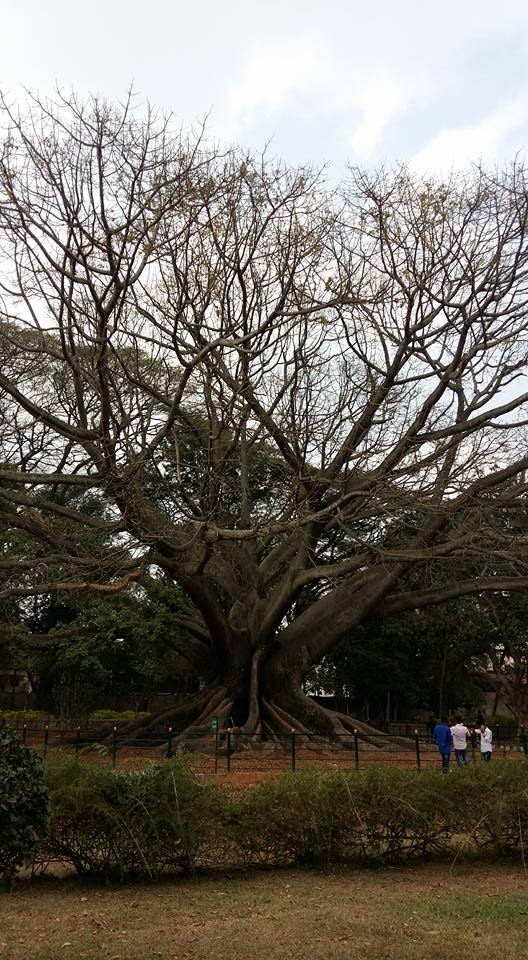Not surprised but disappointed. August 2020 would not host the Lal Bagh Flower show. Twice every year 15th August and 26th January, large sections of Bangalore waits for this event lasting for ten wonderful days, to witness its flowers, trees, moss, lichen…Nature in its full glory.
I certainly attend one of the two if not both. Gradually, over a decade of living in Bangalore, finding my way around the city, I have come to form a pattern. I often take public transport to reach The Lal Bagh. The last trip was a pleasant ride in the new Namma Metro with a change from purple to green line at the Majestic station. I then walk to Lal Bagh and buy my entry ticket. I particularly like the bougainvillea canopied path and reach the entry area near the rock. Having visited many times, I first use the facility of the buggies and take one round of the entire garden, filling my eyes with the resplendent sights. The tree’s eye view of the world beneath.

I listen to the commentary of the bogey driver who double-up as guides, passing on oral history of the garden as they have heard, same every time, pointing out rare and old trees, the lawn clock, the bandstand, the lake and finally stopping at the glass house. I get down near the ancient rock formation and climb till the Kempegowda tower, pausing to get a view of the city from the top.

Descending I enter the bonsai garden wondering at this concept of dwarfing the magnificent trees! I then walk as I feel like, choosing paths that are empty.
Commissioned by Hyder Ali in 1850, completed by his son Tipu Sultan, The Lal Bagh passed through many hands, and each added to the garden what they thought would make it more beautiful or useful. From rare plants and trees, horticulture species, even vegetables have adorned the soil of Lal Bagh. This two hundred and forty acre garden has over a thousand species of trees some being more than hundred years old. Thankfully, despite efforts at commercialising this space, the changing leaderships influencing its character, it has managed to remain conservation inclined.
These shows also became an occasion to meet friends. We would sit on one of the benches or the grass and talk under the trees. Then eat at the stalls, or someone would have packed a snack and tea in a thermos or we would walk to MTR for a coffee or a meal. Both my parents and in-laws, sharing either an interest in walking or gardening would love the visit and talk about the flower shows years later.

The central glasshouse where the flower decoration is held was constructed in 1889-90 with cast iron from Glasgow, and was later extended in 1935 with steel from Mysore. Many schoolchildren from all age groups are brought in droves by their teachers. They obediently fall into a line, hands extended on the shoulder, walking in the midst of giant flower arrangements and sculptures. Supposed to be an exposure to nature, plants, ecology, history, you name it, but most children walk by quickly as soon as the teacher clicks few photos and head to the food stalls. Such a wasted opportunity, I feel. The stalls are of all kinds giving fillip to local produce, I head to check out plants, planters, seeds and garden care.

Bangalore despite everything still has relatively kind weather, gentle to the trees and pleasant to its people. I have always come back with a feeling of gratitude for this amazing visual extravagance of nature and the simple but rare joys in an urban city. Confined to home for over five months, unable to access most community spaces, theatres, musical evenings, malls, physical fitness centres, travel, I cannot wait to go for a walk and stand in queue to buy tickets for The Lal Bagh Flower Show 2021.
Hoping Nature has healed a little bit during this time.
